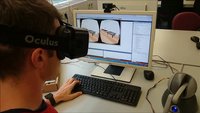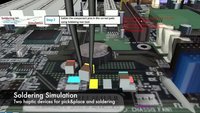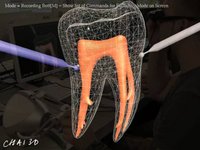Computational Haptics Laboratory
| Lecturer (assistant) | |
|---|---|
| Number | 0000004646 |
| Type | practical training |
| Duration | 5 SWS |
| Term | Sommersemester 2025 |
| Language of instruction | English |
| Position within curricula | See TUMonline |
| Dates | See TUMonline |
- 28.04.2025 13:15-17:15 0943, Praktikum
- 05.05.2025 13:15-17:15 0943, Praktikum
- 12.05.2025 13:15-17:15 0943, Praktikum
- 19.05.2025 13:15-17:15 0943, Praktikum
- 26.05.2025 13:15-17:15 0943, Praktikum
- 02.06.2025 13:15-17:15 0943, Praktikum
- 16.06.2025 13:15-17:15 0943, Praktikum
- 23.06.2025 13:15-17:15 0943, Praktikum
- 30.06.2025 13:15-17:15 0943, Praktikum
- 07.07.2025 13:15-17:15 0943, Praktikum
- 14.07.2025 13:15-17:15 0943, Praktikum
- 21.07.2025 13:15-17:15 0943, Praktikum
Admission information
Objectives
At the end of the module students are able understand the fundamental properties of computational haptics. They are able to design and implement haptic communication and computing approaches. They are able to optimize the schemes towards coding efficiency, computational complexity and memory requirements. Additionally, students are able to judge the performance of different approaches and to understand and evaluate the involved trade-offs. Students additionally know how to read and present scientific papers in the area of computer haptics and haptic communication.
Description
Visual and auditory information are predominant in modern multimedia systems. In contrast, processing and in particular efficient communication of haptic data have not been a field of intense research so far. This is surprising given the fact that we as humans rely heavily on the haptic modality to interact with our environment. With recent advances in Virtual Reality (VR), Man-Machine Interaction, Telerobotics, Telepresence, and Teleaction, however, the topic of haptic communication and computation is rapidly gaining in relevance and is becoming an enabling technology for many novel fields of application. The laboratory provides the participants with a detailed overview of the theoretical background and the implementation of haptic communication and computing approaches.
Prerequisites
Digital Signal Processing; Communication Networks, Internet Communication
The following modules should be passed before taking the course:
-
It is recommended to take the following modules additionally:
-
The following modules should be passed before taking the course:
-
It is recommended to take the following modules additionally:
-
Teaching and learning methods
Learning method:
In addition to the individual methods of the students consolidated knowledge is aspired by weekly lab sessions where the students implement the concepts under the supervision of teaching assistants. Additionally students have to prepare homeworks before the lab session that revisit concepts that are relevant for the lab implementation work.
Teaching method:
The lab sessions are held in a student-centered way. Teaching assistants support the students during the implementation of computational haptics approaches.
In addition to the individual methods of the students consolidated knowledge is aspired by weekly lab sessions where the students implement the concepts under the supervision of teaching assistants. Additionally students have to prepare homeworks before the lab session that revisit concepts that are relevant for the lab implementation work.
Teaching method:
The lab sessions are held in a student-centered way. Teaching assistants support the students during the implementation of computational haptics approaches.
Examination
The final grade is composed of the following elements:
- 40% task performance during each lab session.
- 20% presentation of scientific paper(s) to prove competency in reading and presenting scientific papers
- 40% final lab projects
- 40% task performance during each lab session.
- 20% presentation of scientific paper(s) to prove competency in reading and presenting scientific papers
- 40% final lab projects
Recommended literature
Lab script, selected book chapters and journal or magazine papers
Links
Kick-off meeting: April 28, 13:15-15:00, room 0943
Final lab projects
Videos of the final lab projects in the Computational Haptics Lab during the last years.


